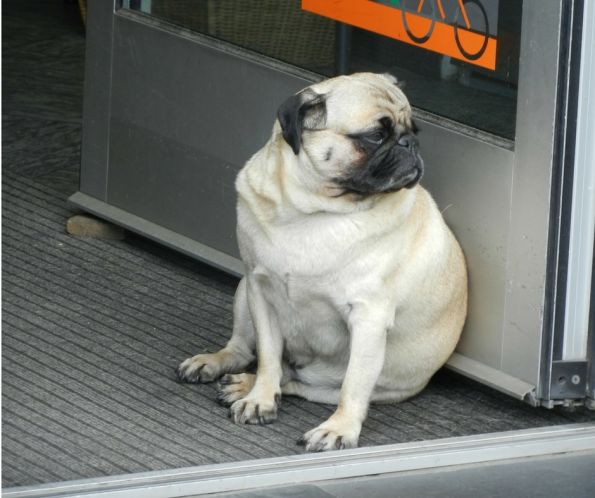
October is Pet Obesity Awareness Month. Overweight and obese pets have become a large issue in the veterinary industry over the past years and continue to be a growing concern all over the world. The Australian Veterinarian Association reports 41% of pets overweight or obese. Those rates are even higher in North America, over 50% in Canada and 56% in the Unites States. That means that around half of all domestic pets could stand to lose a few pounds. It also means that half of all domestic pets are not living at an optimum level of health and are having their lives put at risk by a condition that is very much manageable and preventable.
Obesity shortens lives; we know the risks that it poses for our pets. Overweight pets have a shorter lifespan and poorer quality of life, with increased risks of medical conditions such as osteoarthritis, heart disease, diabetes, and more. They are also prone to a greater risk of complications during surgical procedures and recovery. Dogs are at a higher risk than cats; females are at a greater risk than males, and older animals are at a greater risk than younger ones. The incidence of obese pets is also tied to the obesity levels of their owners, which is often directly related to the amount and frequency of exercise pets get.
Most pet owners overfeed their pet, by not following the feeding recommendations on food packaging or their veterinarian’s recommendations. Free feeding, i.e., having unlimited food always available so your pet can graze as they like, leads to consuming many more calories than necessary. Treats also contribute to your pet’s overall caloric intake and should be taken into consideration when thinking about how much your pet eats and should be eating. Giving table scraps can also be a large contributor of excess calories, especially depending on the types of human food or scraps your dog receives. While it is fine to feed pet’s human food, be sure that you are knowledgeable about what foods are good for and harmful to pets. This avoids accidentally giving your pet something that is toxic to them, such as grapes or chocolate. Take a look at this for some ideas of healthy human food treats for your pets.
These are the average caloric needs for indoor pets who receive around 30 mins of activity today (like a brisk walk):
| Cats: | Dogs: |
| 10 lbs. 180 to 200 calories | 10 lbs. 200 to 275 calories |
| 20 lbs. 325 to 400 calories | |
| 50 lbs. 700 to 900 calories |
These caloric needs are based on adult spayed or neutered pets (who will need fewer calories than intact pets). The needs of your individual pet may differ based on breed, lifestyle, activity level, genetics, and more. Discuss your pet specific needs with your veterinarian, who will be able to provide you with a tailored diet and exercise program.
Regular exercise is an important part of maintaining a healthy weight. Your dog should be active at least 20 minutes three times a day, with a variety of activities such as a brisk walk or jog, swimming, playing fetch, and other games or toy play. Cats should have 15-20 minutes of active playtime or exercise twice a day to stimulate their senses with activities like laser tag or fishing-pole toys.
If your pet is at a healthy weight, you should be easily able to feel their ribs, and when viewed from above, they should have a natural ‘waistline’ that curves in past the ribcage. The belly should also slant upwards from the ribcage to the hind legs. If the belly is saggy, it is a sign of being overweight. Your vet will be able to give you a more detailed review of your pet’s Body Condition Score- the pet version of a BMI, which is a yardstick against which to evaluate body fat.
Keeping your pet fit and lean will help you extend their life, keeping them healthier and happier to enjoy their companionship longer. Pet obesity is one of the top nutritional disorders in pets and is one that can be easily managed and avoided. Speak with your vet if you are concerned about your pet’s health and weight, who will be able to give you sound guidance and a plan to keep your pet healthy and happy.